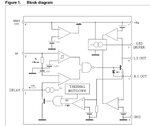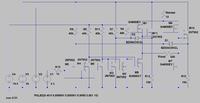kanonka
Member level 1
Hi, I need some help on the high side driver idea/part/schematic.
I need to drive high-side mosfets in H-Bridge config AND precisely measure current that goes into the load. Originally I did it very simple way: V+ goes to current sensing resitor, then goes H-Bridge. Problem is that my V+ is 43V, so I somehow need to clamp voltage on a high side gates. I did it standard way - added Zener diodes. Problem with this approach is that Zener diode sends some additional current to the load, which my sensing resistor does not measure.
So, if there any way to drive high side mosfet without affecting current on the load? (well, effect of 1uA or less would be acceptable). Let me rephrase that: yes, I know it's possible -just add op amp to measure voltage off the corresponding side of the load, and then just use that voltage as a ref for high side driver, but this adds too much of a complexity to the design. So, is there a simple way?
Another possibility is to add current sensing resistor right before the load, but this will require bidirectional current sensing op amp + some circuit to take an "absolute" value from the result, which is even more complicated.
Any ideas?
I need to drive high-side mosfets in H-Bridge config AND precisely measure current that goes into the load. Originally I did it very simple way: V+ goes to current sensing resitor, then goes H-Bridge. Problem is that my V+ is 43V, so I somehow need to clamp voltage on a high side gates. I did it standard way - added Zener diodes. Problem with this approach is that Zener diode sends some additional current to the load, which my sensing resistor does not measure.
So, if there any way to drive high side mosfet without affecting current on the load? (well, effect of 1uA or less would be acceptable). Let me rephrase that: yes, I know it's possible -just add op amp to measure voltage off the corresponding side of the load, and then just use that voltage as a ref for high side driver, but this adds too much of a complexity to the design. So, is there a simple way?
Another possibility is to add current sensing resistor right before the load, but this will require bidirectional current sensing op amp + some circuit to take an "absolute" value from the result, which is even more complicated.
Any ideas?

